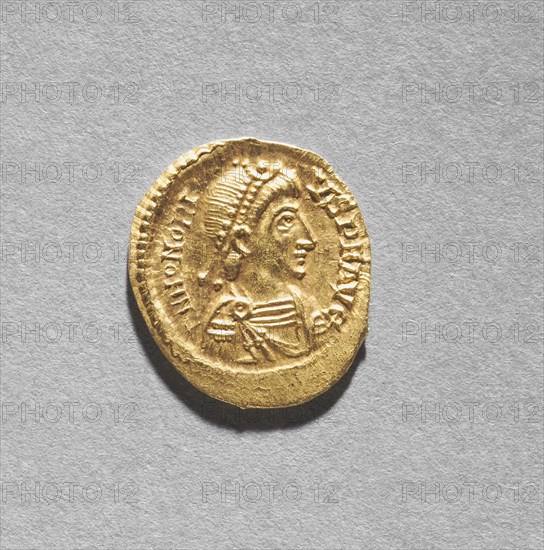
Sujet
Solidus of Arkadios (obverse), 395-408. Creator: Unknown.
Légende
Solidus of Arkadios (obverse), 395-408. The vast number of surviving Byzantine coins attests to the level of trade across the empire. Controlled and supervised by the emperor, the producers of coins took care to represent his authority and reflect his stature. Talented artists were recruited to engrave the dies (molds) used for the striking of coins. Emperors increasingly came to include their heirs and co-emperors on their coinage, as well as other family members or even earlier rulers. Coins were recognized, then as now, as small, portable works of art. With their inscriptions and images, Byzantine coins provide valuable documentation of historical events and a record of the physical appearance of the emperors. The coins shown here include the solidus, the basic gold coin of 24 karats; the tremissis, a gold coin of one-third the weight and value of the solidus; and the nomisma, which in the 10th century replaced the solidus as the standard gold coin.
Crédit
Photo12/Heritage Images/Heritage Art
Notre référence
HRM19G06_266
Model release
NA
Property release
NA
Licence
Droits gérés
Format disponible
8,7Mo (1,2Mo) / 14,7cm x 14,8cm / 1734 x 1752 (300dpi)